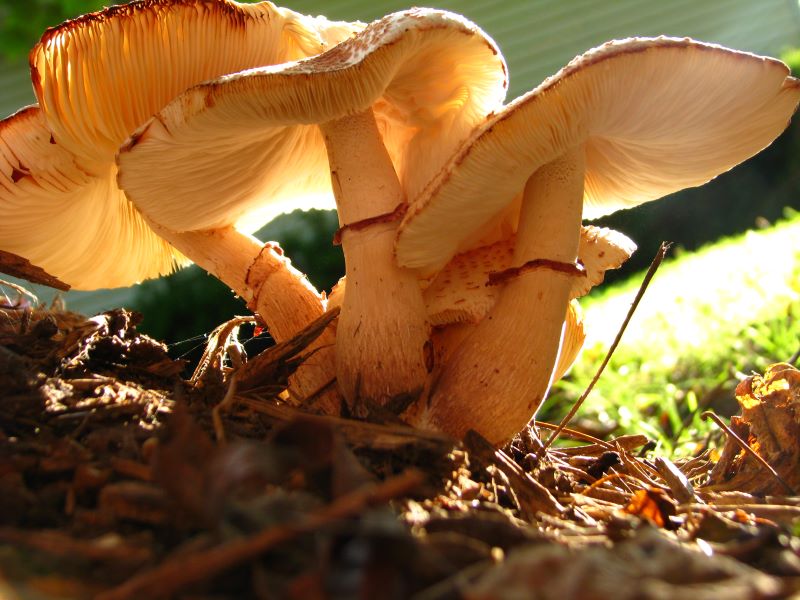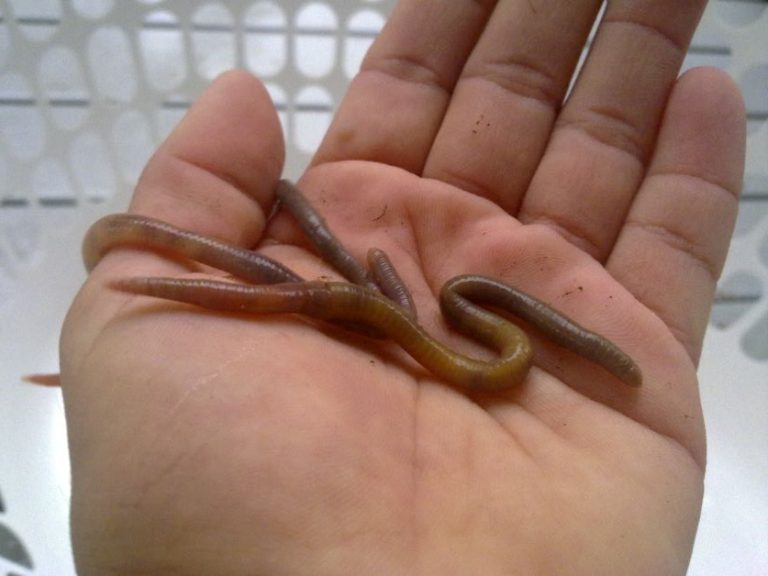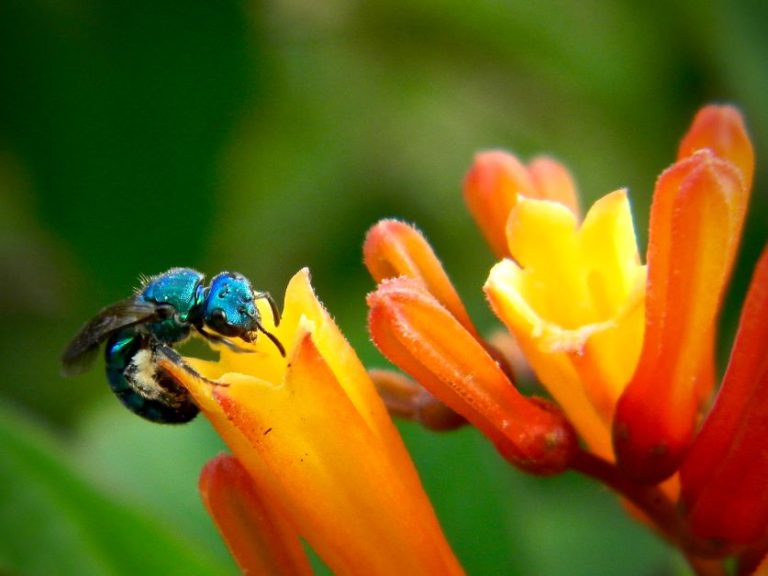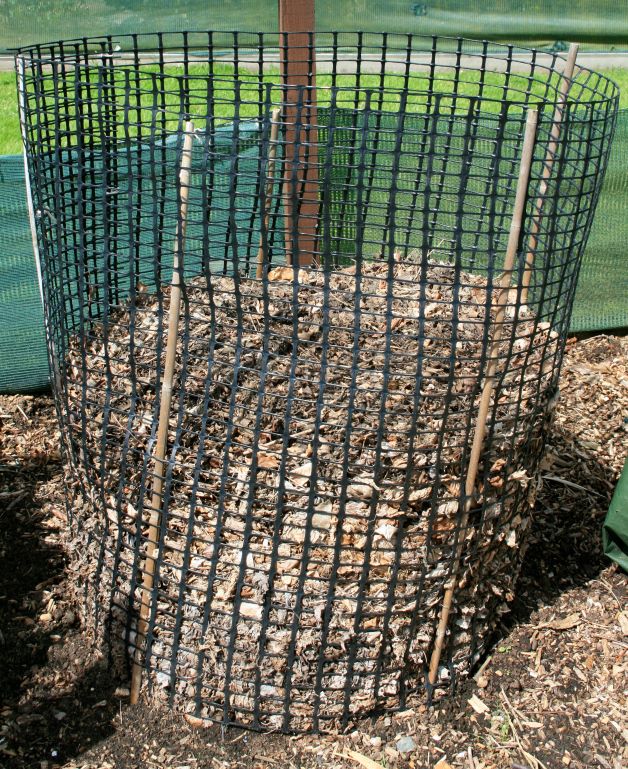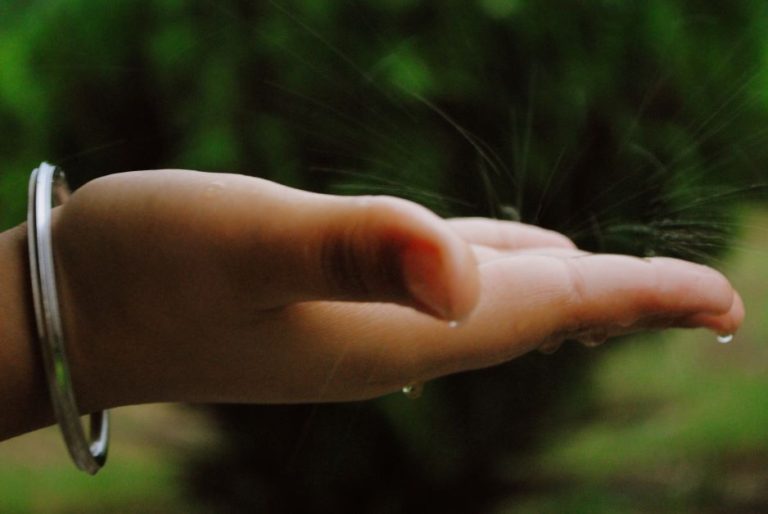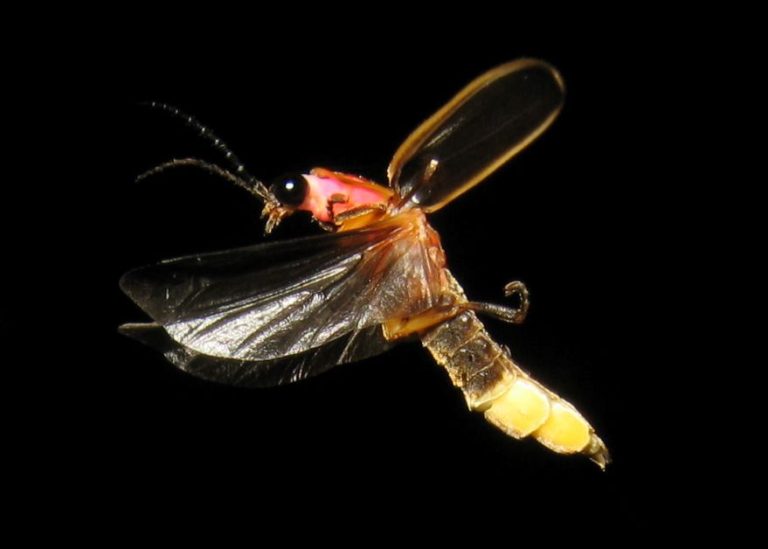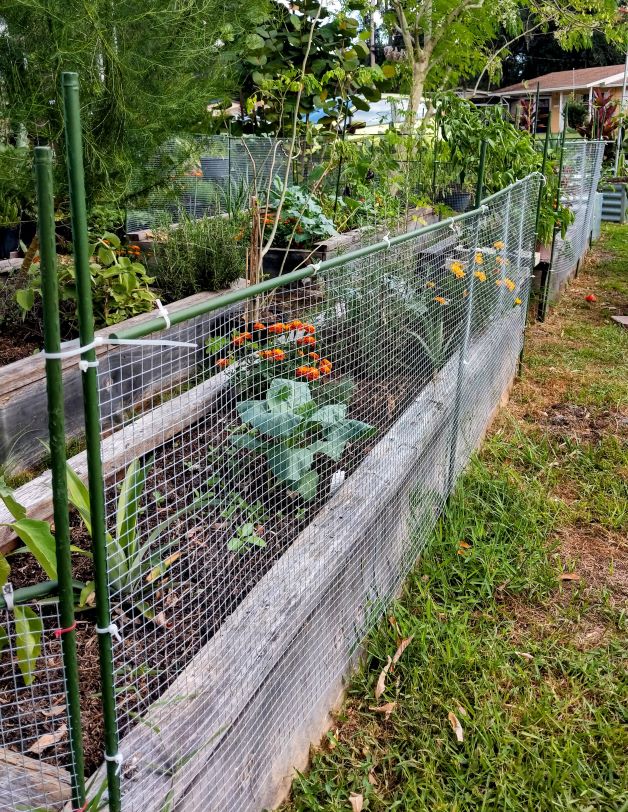Are Mushrooms in the Garden Good or Bad?
You wake up one day to find that a couple of giant, white mushrooms popped up overnight in your garden. You start to panic. What type of fungicide do you use to get rid of mushrooms? Do mushrooms hurt vegetable plants? What do you do now?
Rejoice, that’s what you do now. Forget any ideas of fighting these fantastic fungi. Mushrooms in a garden are a sign of healthy soil. Congratulations, you’ve successfully created a happy little biome in your garden bed.
How do Mushrooms Grow?
Mushrooms have a complex life cycle. To understand how a mushroom grows, let’s first learn the parts of a mushroom:
Spore – the “seed” of a mushroom
Hyphae – wispy strand-like filaments that act like the “roots” of the mycelium
Mycelium – mass of hyphae that support the growth of the mushroom. Also known as hyphal tissue. You can think of mycelium like the “building blocks” of the mushroom.
Hyphal knot – the first stage of mushroom growth. The hypal knot is what forms the pin.
Pin – the second stage of mushroom growth. The pin contains all the cells that the mushroom will grow in to. It takes in moisture and expands to form the mushroom.
Fruiting body – the mushroom
A mature mushroom releases billions of spores. These spores land on the soil and germinate into hyphae. The hyphae then come together to form a layer called mycelium. You can think of hyphae and mycelium as the “roots” of the mushroom. When favorable fungi conditions exist, the mycelium produces a hyphal knot. The hyphal knot then forms into a pin. Finally, the pin grows into the fruiting body.
Why are Mushrooms Growing in the Garden
No matter what you do, there will always be mycelium in your soil. Even store-bought potting mix contains mycelium.
Most of the time, the mycelium sits dormant and unseen under the soil. When the conditions are right, though, the mycelium are triggered into forming mushrooms. Favorable fungi conditions are damp soil, humid weather, and plenty of decaying organic matter such as rotting wood, sawdust, mulch, or manure.
Benefits to Mushrooms in a Vegetable Garden
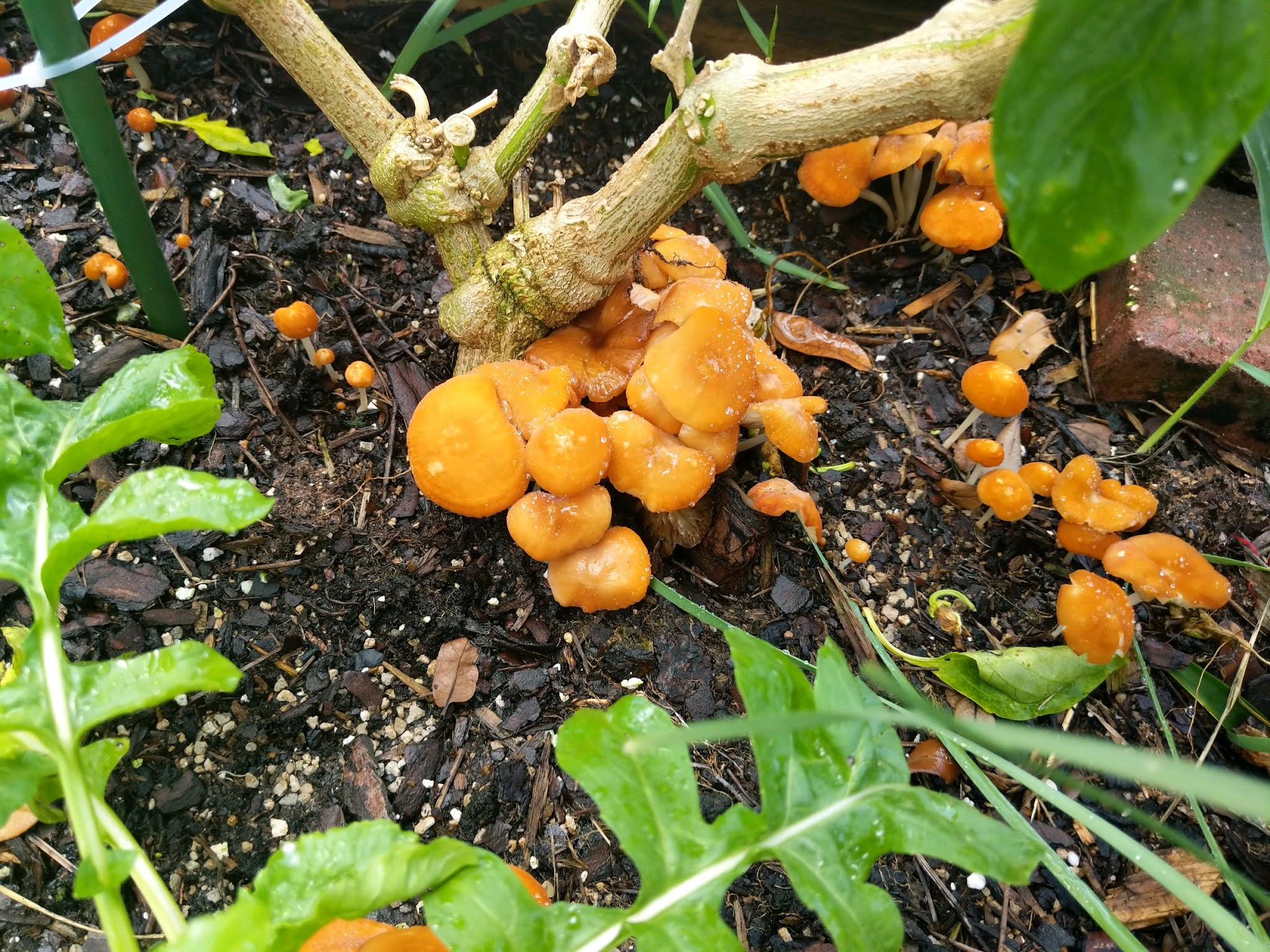 |
| Jack o’ Lantern mushrooms growing around my bell pepper plant |
Hyphae attach to roots of plants – this is a good thing. Hyphae increase the surface area of plant roots. That means the roots have a bigger opportunity to absorb nutrients from the soil. You can almost think of the hyphae as root extensions.
This plant/fungi symbiotic relationship called “mycorrhiza.” Mushrooms use their hyphae to get energy from the host plant, and at the same time give the host plant nutrients that it absorbs from the soil. In other words, mushrooms and plants help each other grow.
Mycoorhizal filaments also make your soil healthier and help fight root-borne plant diseases such as root rot.
Mushrooms and mycorrhizal filaments improve soil structure. This helps your plants be more drought-tolerant.
Unlike plants, mushrooms don’t have chlorophyll. This means that they don’t get their energy from the sun. Instead, they feed on decaying organic matter in the soil. Mushrooms break down organic matter and turn it into nutrients that are more easily absorbed by your plants.
Are Mushrooms in the Garden a Sign of Overwatering?
Although mushrooms are a good thing in the garden, they can be a sign of overwatering.
If you know that you’re watering correctly and have proper drainage, then not to worry – the mushrooms you have are natural and beneficial.
If your soil always seems damp, your plants are struggling AND you are getting mushrooms, then you’re probably overwatering.
Some helpful tips to avoid overwatering are:
- Always let your plants dry out completely between watering
- Know the specific water needs of your plant
- Include materials like sand or perlite in your soil to improve drainage
- Make sure you have holes in the bottom of your pots when container gardening.
It’s also important to know the signs of an overwatered plant:
- Yellowing and wilting leaves
- Dropping leaves
- Mushy stems
- Brown spots on leaves
- Mold
Mushrooms vs. Mold
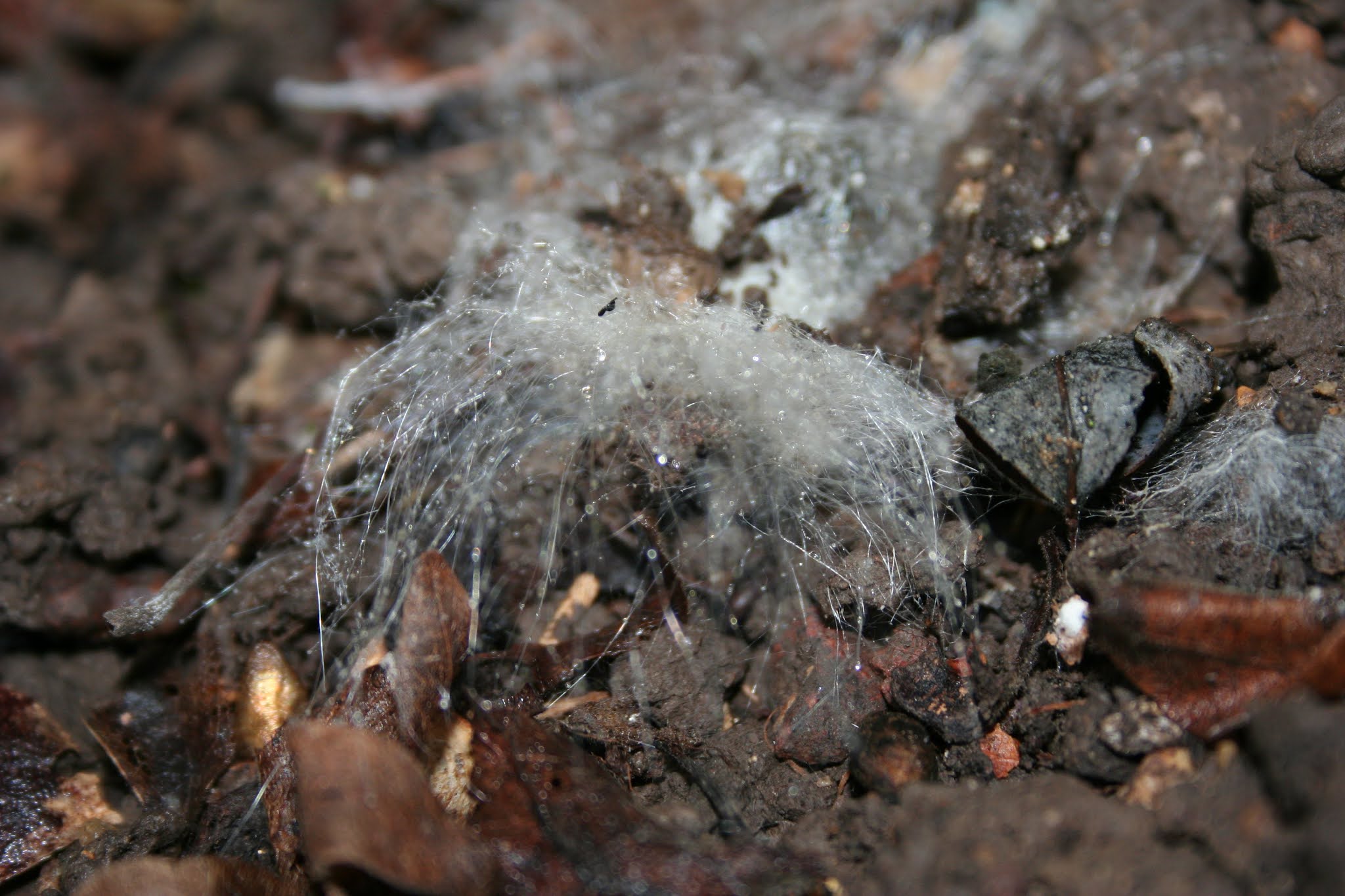 |
| Photo Credit: Noj Han |
If you see a fine layer of wispy mold over your soil, then your garden is staying too wet for too long. This can cause lots of problems like fungal disease, root rot, and even plant death.
Are Garden Mushrooms Edible?
Unless you’re an expert, mushroom identification is tricky. Lots of mushrooms look almost identical – while one might be edible, their lookalike might be poisonous.
An example of this is the puffball. A puffball mushroom is a fairly common edible species to find in the wild. Unfortunately, a poisonous mushroom called the Death Cap looks just like a young puffball. As the name implies, eating a Death Cap can be a fatal mistake.
Only eat wild mushrooms that you know for sure are edible. Most of the time, you can’t identify mushrooms by sight alone and need to take a spore print. You should really only forage for wild mushrooms with someone who has a lot of field experience.
One of my favorite books for mushroom identification is Mushrooms of the Southeast. If you’re a Floridian interested in learning more about mushrooms and foraging, this book is a great place to get started.
Common Garden Mushrooms
The types of mushrooms you find in your garden depend on your region and climate – the same mushrooms you’d find in the Southeast aren’t the same as those you’d find on the West coast.
Below are some common mushrooms species that you can find in Florida. Notice how similar some of them look to each other – this is a prime example of why you can’t identify mushrooms just by looking at them.
Chlorophyllum rhacodes (Shaggy Parasol)
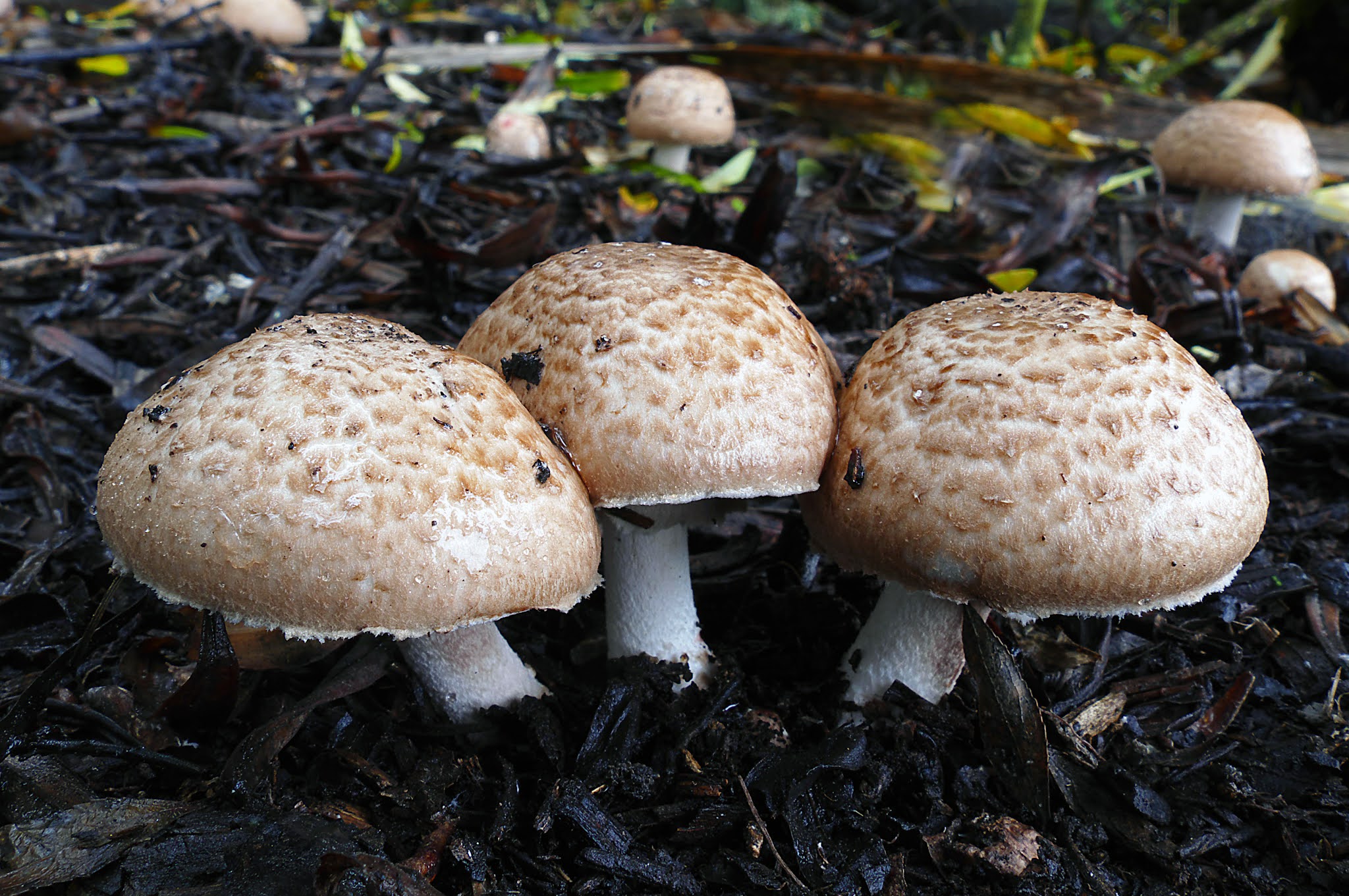 |
| Photo Credit: Bernard Spragg |
Butyriboletus floridanus (Florida Bolete)
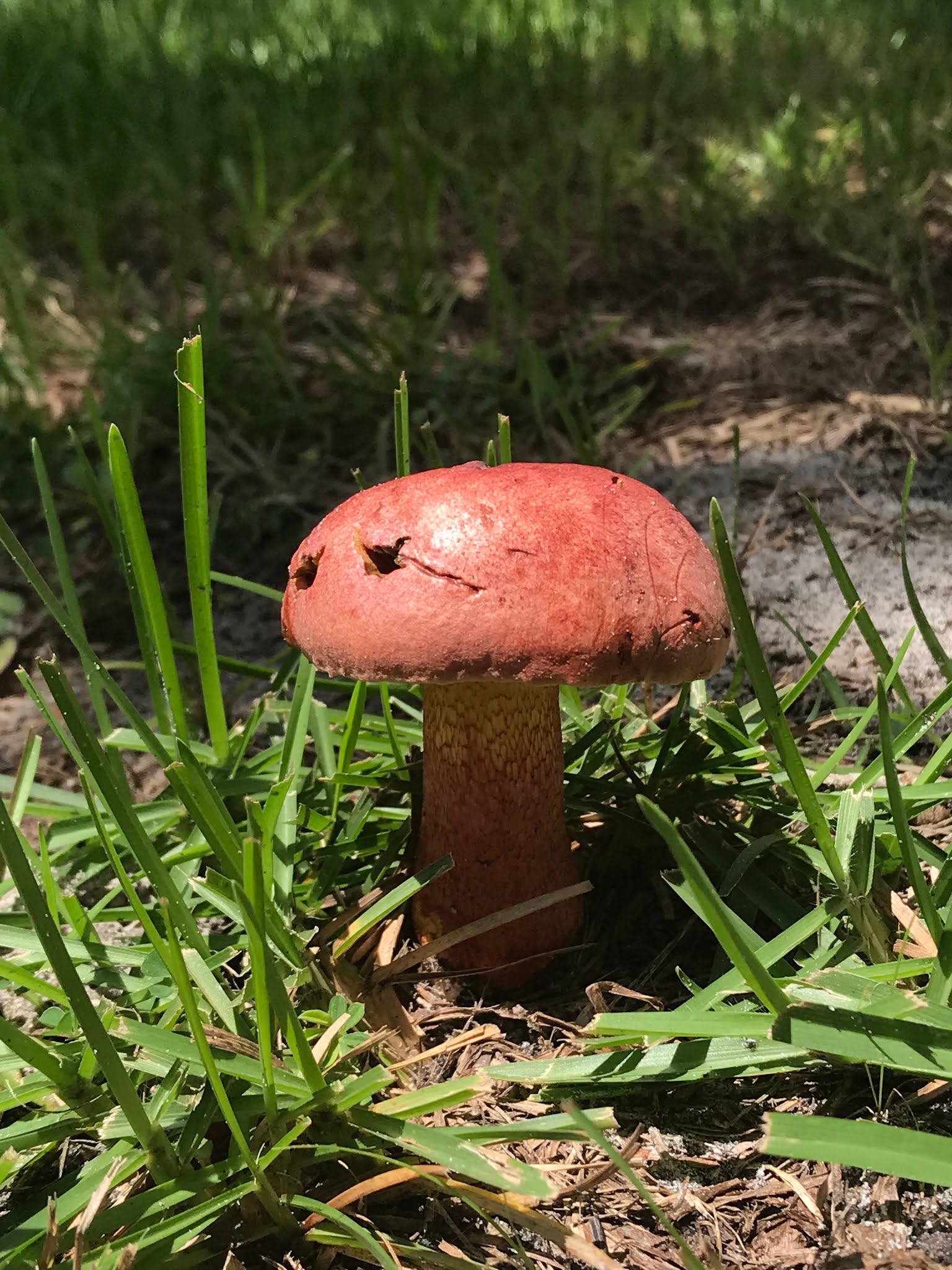 |
| Photo Credit: Matt Cornelisen |
Leucocoprinus birbaummi (Flowerpot Parasol)
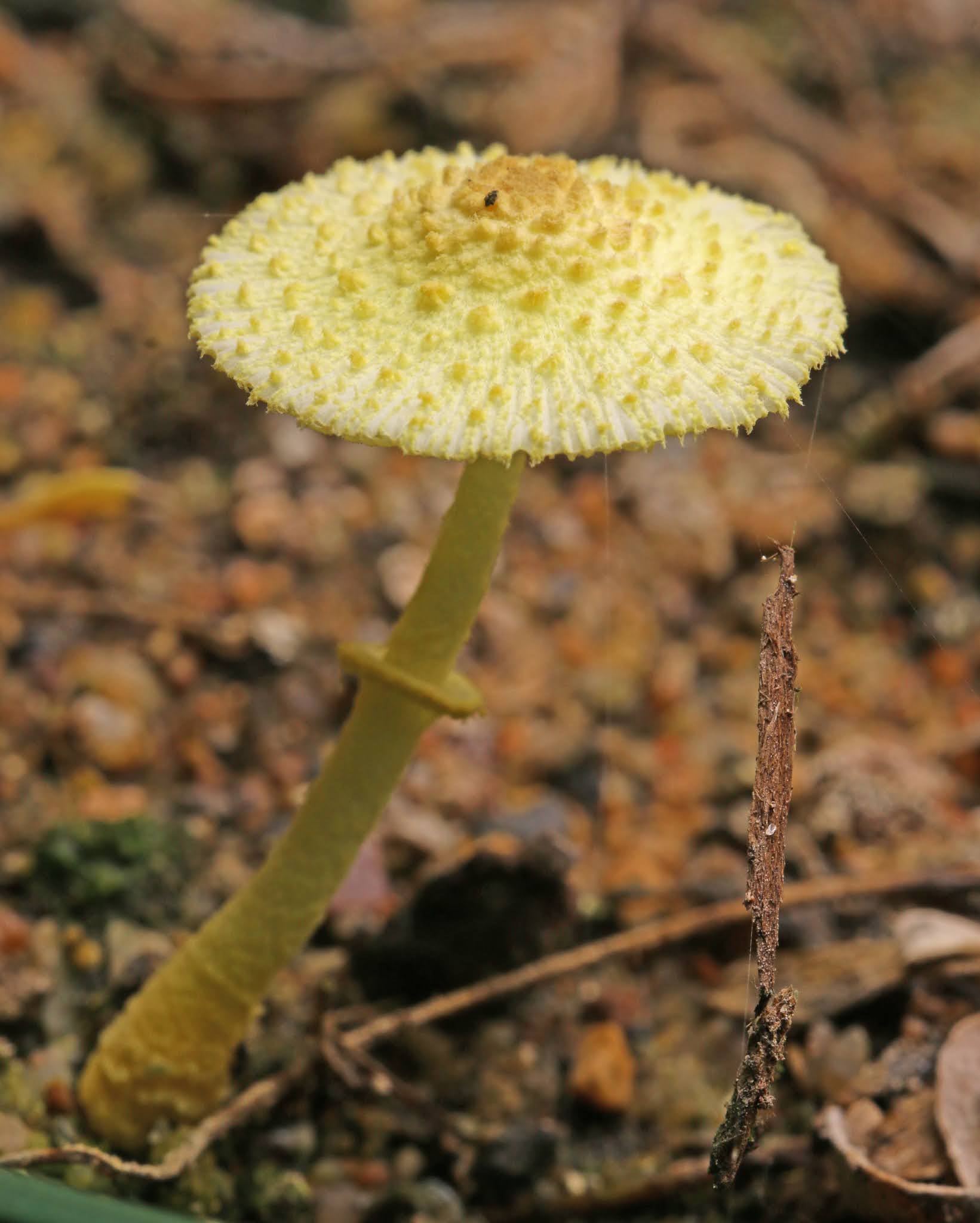 |
| Photo Credit: Andrey Zharkikh |
Macrolepiota procera (Parasol Mushroom)
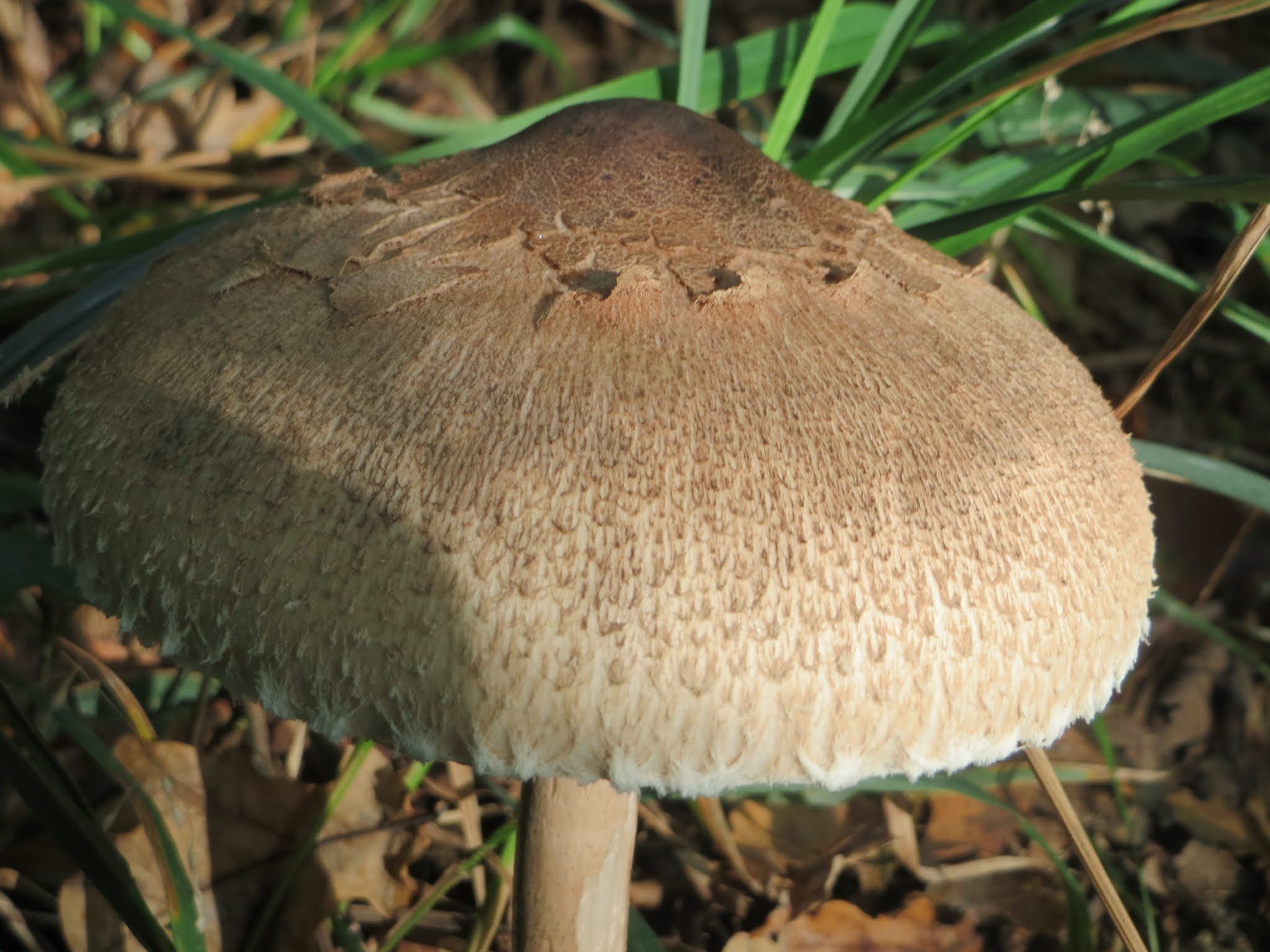 |
| Photo Credit: Andreas Rockstein |
Chlorophyllum molybdites (False Parasol)
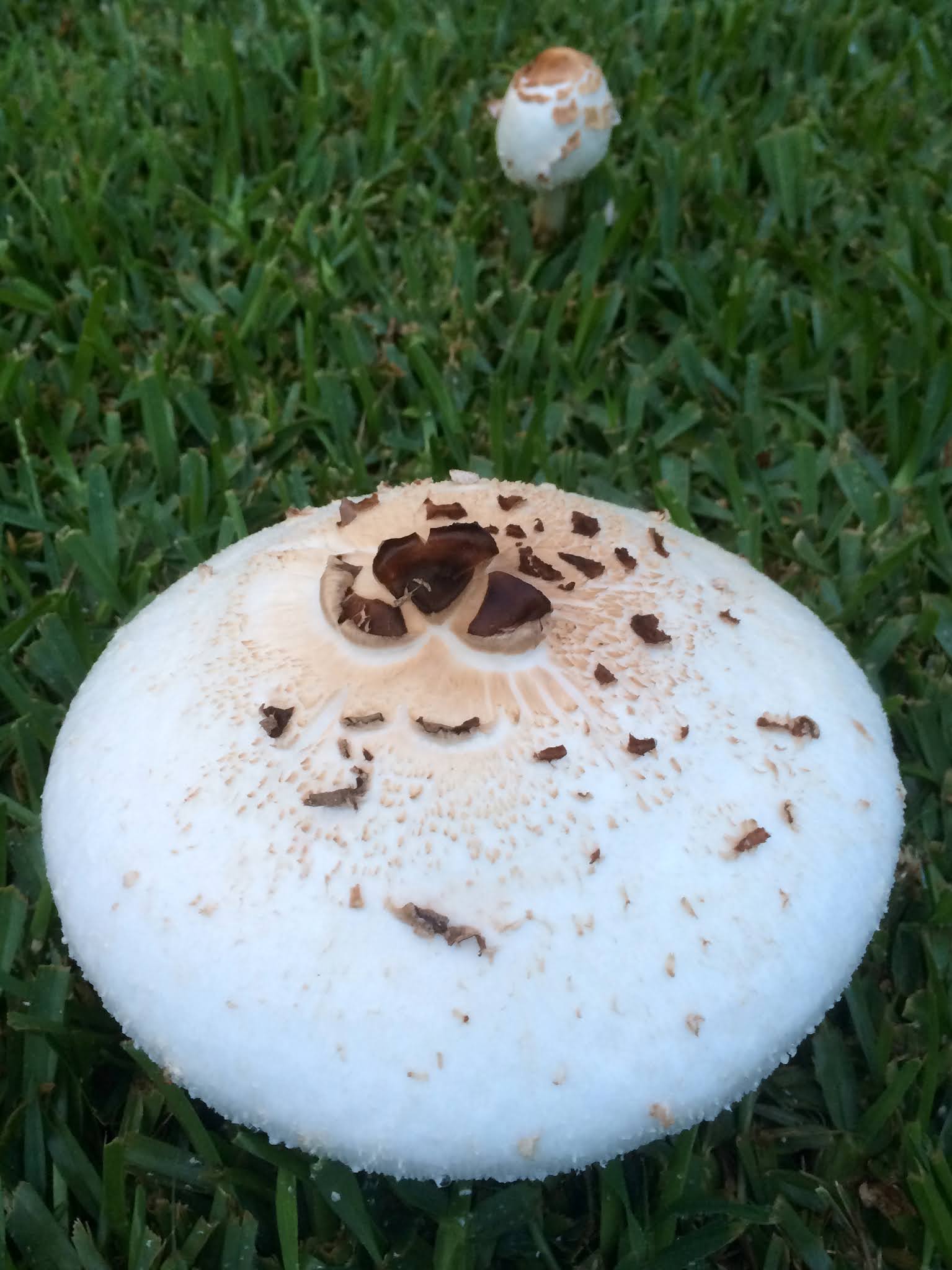 |
| Photo Credit: Scot Nelson |
Omphalotus illudens (Jack o’ Lantern)
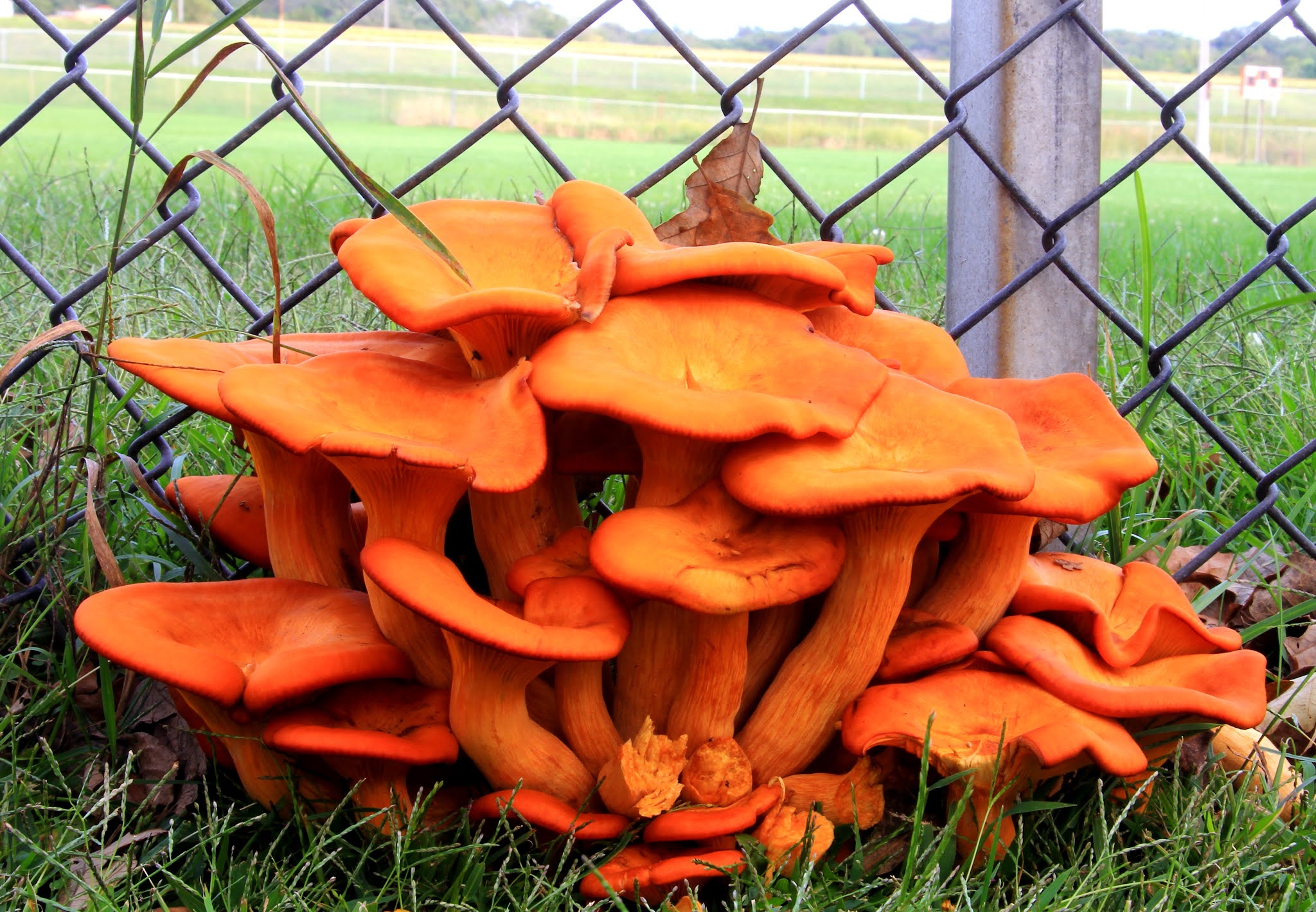 |
| Photo Credit: Larry Reis |
How to Get Rid of Mushrooms in the Garden
The answer here is DON’T.
Rather than removing mushrooms from your garden, add some instead! I recommend mixing in mycoorhizal amendment to your soil. Plants and mushrooms have been helping each other grow for millions of years. Instead of intervening, foster this beneficial relationship and your garden will be happier for it.
First photo credit: D. Calvin Andrus
Disclaimer: At no additional cost to you, I get commissions for purchases made through links in this post.

